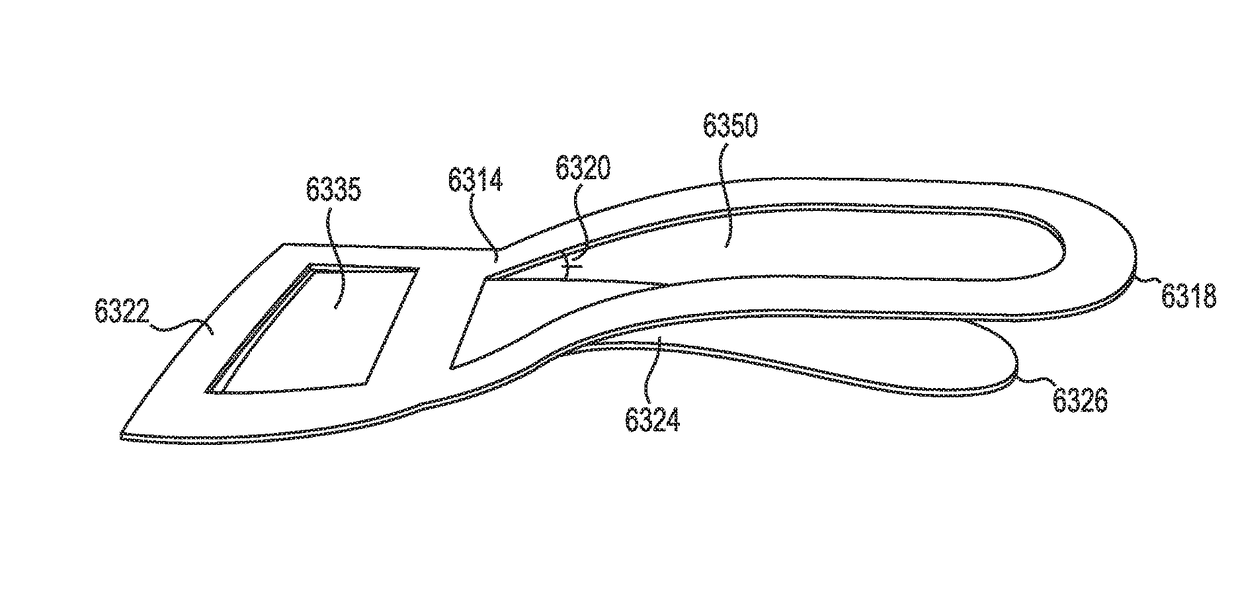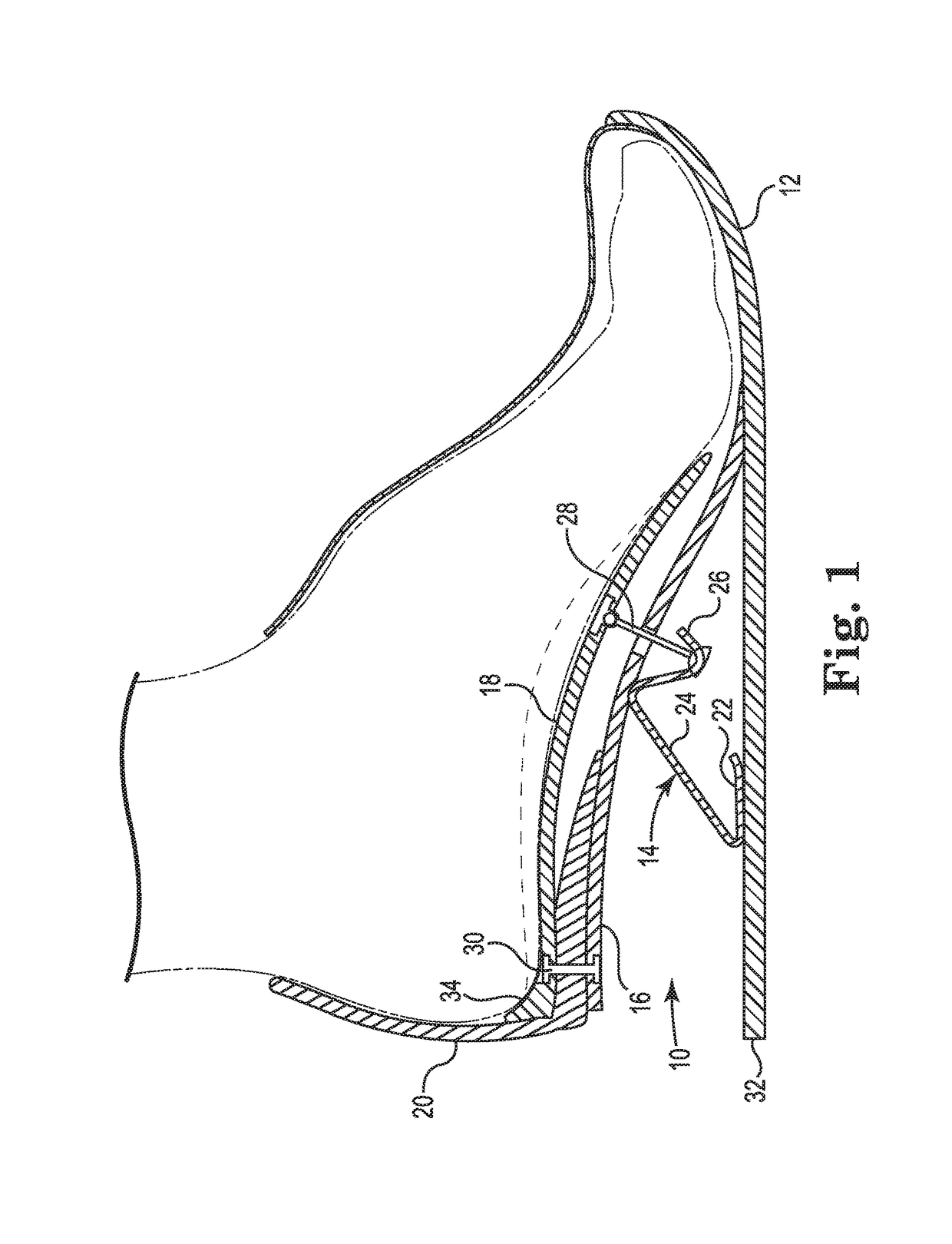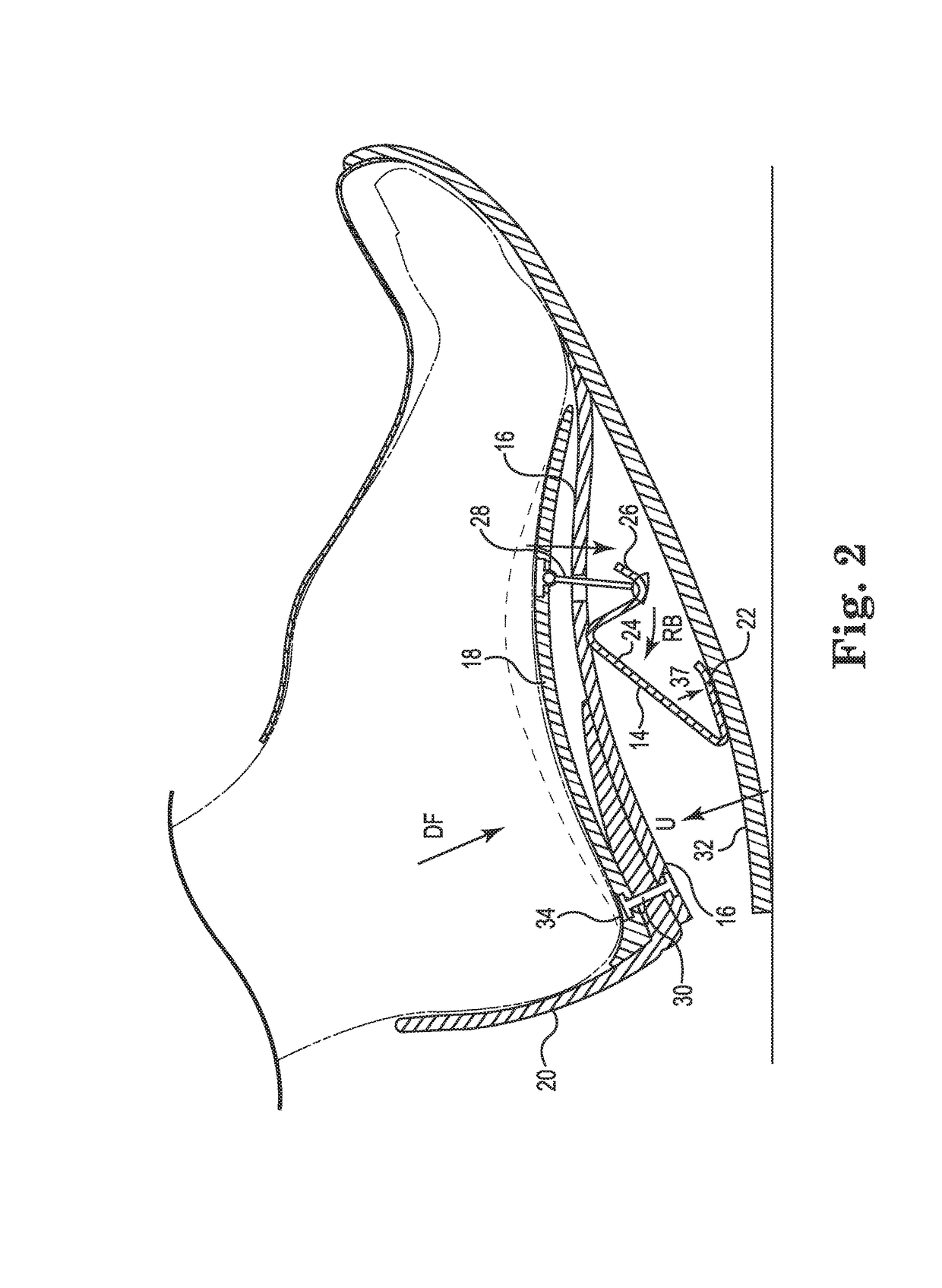Energy return orthotic systems
a technology of energy return and orthotics, applied in the field of orthotics, can solve the problems of physical damage, injury of the foot, and conventional devices not being dynamically designed, and achieve the effects of reducing the need for motion, enhancing reduction, and leveling pressur
- Summary
- Abstract
- Description
- Claims
- Application Information
AI Technical Summary
Benefits of technology
Problems solved by technology
Method used
Image
Examples
first embodiment
[0105]Referring now to FIGS. 1 through 6, the orthotic energy return system in accordance with the invention is depicted. FIG. 1 illustrates a foot (in phantom lines) at rest wearing the energy return system 10 in accordance with the invention. The energy return system 10 is shown in the unburdened or off-loaded position with the base layer 12 at rest on a surface such as the ground. The energy return system 10 broadly includes base layer 12, lever 14, platen 16 and orthotic 18. Base 12 may be of any length so long as it generally extends from the sole of the foot to the toe region. Base 12 may comprise any material used for the soles of shoes including but not limited to rubber, plastics, polymers, polyurethanes and the like. Lever 14 includes slide 22, angled central portion 24 and angled connecting portion 26. Lever 14 is made from a material that is resilient to allow it to dynamically deform during the gait cycle. Suitable materials that may be utilized for lever 14 include pla...
embodiment 2010
[0140]FIG. 19 depicts a fourth alternative embodiment 2010 of the energy return system with the foot depicted in a static unburdened position. Like elements are labeled with like numerals. Particularly, orthotic 2018 is attached to platen 2016 at the rear of the foot 2020. Base 2012 is attached to platen 2016 underneath the ball of the foot 2029. Band 2011 surrounds the phalanges and the cable 2028 is attached to the band. As platen 2016 flattens, lever 2014 functions to drawn arch up U. Orthotic 2018 moves rearward R and upward U against the arch when downward force is applied to the ground during the gait cycle. This embodiment is designed to treat plantar fascia.
[0141]FIGS. 20 and 21 depict a fifth alternative embodiment 2110 of the energy return system in accordance with the invention designed to treat plantar fasciitis. Like elements are labeled with like numerals. Base 2112 is attached to platen 2116 behind heel at 2120. As best seen in FIG. 21, orthotic 2118 is modified to fo...
PUM
 Login to View More
Login to View More Abstract
Description
Claims
Application Information
 Login to View More
Login to View More - R&D
- Intellectual Property
- Life Sciences
- Materials
- Tech Scout
- Unparalleled Data Quality
- Higher Quality Content
- 60% Fewer Hallucinations
Browse by: Latest US Patents, China's latest patents, Technical Efficacy Thesaurus, Application Domain, Technology Topic, Popular Technical Reports.
© 2025 PatSnap. All rights reserved.Legal|Privacy policy|Modern Slavery Act Transparency Statement|Sitemap|About US| Contact US: help@patsnap.com



